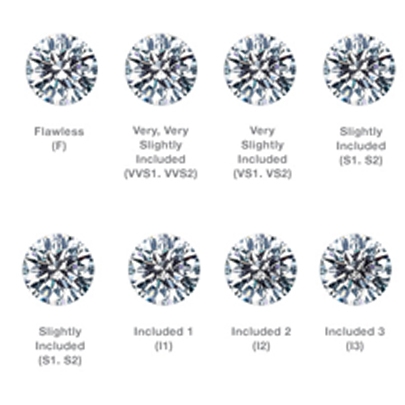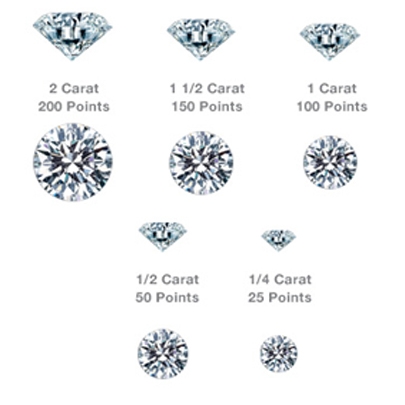Basic 4CS
Crash Course on the 4CS of Diamonds
CUT

The first C of the 4 Cs is the diamond’s cut. A well-cut diamond will direct more light through the crown. A diamond with a depth that's too shallow or too deep will allow light to escape through the sides or the bottom of the stone.
COLOR

The color of a diamond is the next important element of the 4 Cs. The diamond’s color ranges from an icy white colorless to a light yellow. It's very difficult to tell the difference from one color grade to another color grade. That's why it's important to compare diamonds side by side. Colorless is the most rare and therefore the most expensive. Yellow is the least rare and therefore the least expensive.
CLARITY

The Clarity of a diamond is an important element of the 4 Cs. It affects the rarity and therefore the expense. The clarity refers to the diamond's tiny markings. GIA created a diamond grading scale to help the consumer understand what makes one diamond worth more than another. The grading scale is based on rarity. Flawless is the most rare and therefore the most expensive. Included 3 is the least rare and therefore the least expensive.
CARAT WEIGHT

The last of the 4 Cs of diamonds is the carat weight. Many people want the largest diamond they can afford. 1 carat is divided into 100 points so that 50 points is 1/2 carat. Although size is an important factor in determining the value of a diamond, the cut, color, and clarity are equally important.
